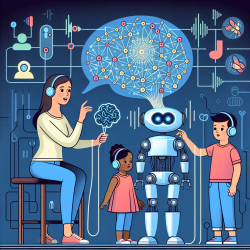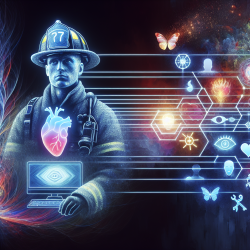Machine Learning Magic: Speech Disorder Solutions
In recent years, the integration of machine learning (ML) into speech disorder diagnosis and treatment has emerged as a promising frontier. The systematic literature review titled "Exploring the Role of Machine Learning in Diagnosing and Treating Speech Disorders" by Brahmi et al. (2024) provides a comprehensive overview of how ML is transforming the landscape of assistive technology for individuals with speech disorders.
Understanding the Landscape
The review identifies significant trends in ML applications for speech disorders, highlighting support vector machines (SVM) and neural networks (CNN, DNN) as the most utilized techniques. These methods have shown remarkable success in recognizing and classifying speech disorders, particularly Dysarthria, which was the focus of 54% of the studies analyzed.
Key Findings and Applications
The systematic literature review analyzed 65 papers and found that neural network-based architectures, especially CNNs and DNNs, have seen increased usage since 2018. This trend underscores the growing reliance on deep learning models to enhance speech recognition accuracy and assistive technology effectiveness.
Key insights from the review include:
- Neural networks, particularly CNNs and DNNs, are crucial for processing complex speech patterns.
- Support vector machines (SVMs) are effective in handling nonlinear decision boundaries in speech data.
- Mel-frequency Cepstral Coefficients (MFCCs) are commonly used for feature extraction, providing a robust representation of speech signals.
Challenges and Opportunities
Despite the advancements, the review identifies several challenges in the current ML approaches to speech disorders:
- Data Diversity: The majority of datasets focus on English, with limited representation of other languages, which may hinder the generalizability of ML models.
- Dataset Size: Many studies are constrained by small, non-diverse datasets, affecting the robustness of ML models.
- Feature Extraction: While MFCCs are widely used, there is a need for more nuanced features that capture the intricacies of speech disorders.
Addressing these challenges requires collaboration between researchers, clinicians, and technologists to create more comprehensive datasets and develop innovative feature extraction techniques.
Implications for Practitioners
For practitioners in speech-language pathology, the integration of ML into therapy practices offers numerous benefits. By leveraging ML models, practitioners can enhance diagnostic accuracy and tailor interventions to individual needs. The use of automated speech recognition systems can also streamline therapy processes, allowing practitioners to focus on personalized care.
Practitioners are encouraged to explore the potential of ML in their practice and consider collaborating with researchers to develop and refine ML-based tools. This collaboration can lead to more effective interventions and improved outcomes for individuals with speech disorders.
Conclusion
The systematic literature review by Brahmi et al. (2024) underscores the transformative potential of machine learning in diagnosing and treating speech disorders. As the field continues to evolve, practitioners and researchers must work together to harness the power of ML, ultimately improving the quality of life for individuals with speech disorders.
To read the original research paper, please follow this link: Exploring the Role of Machine Learning in Diagnosing and Treating Speech Disorders: A Systematic Literature Review.










